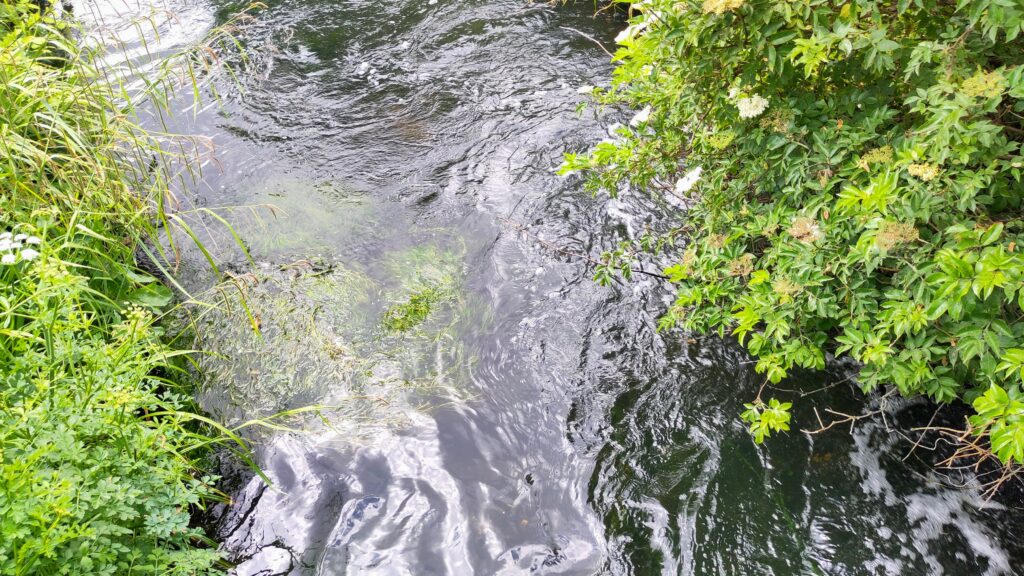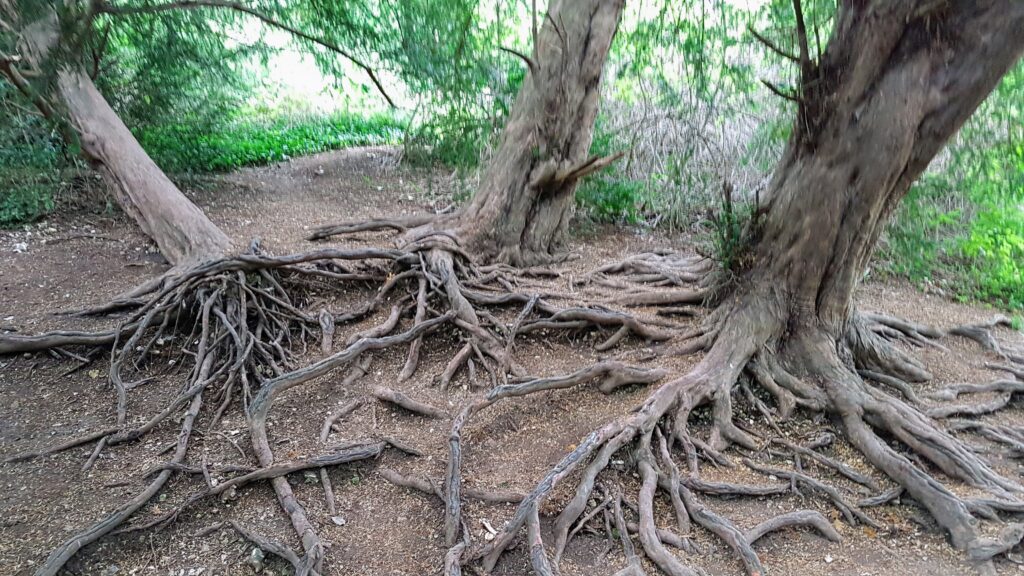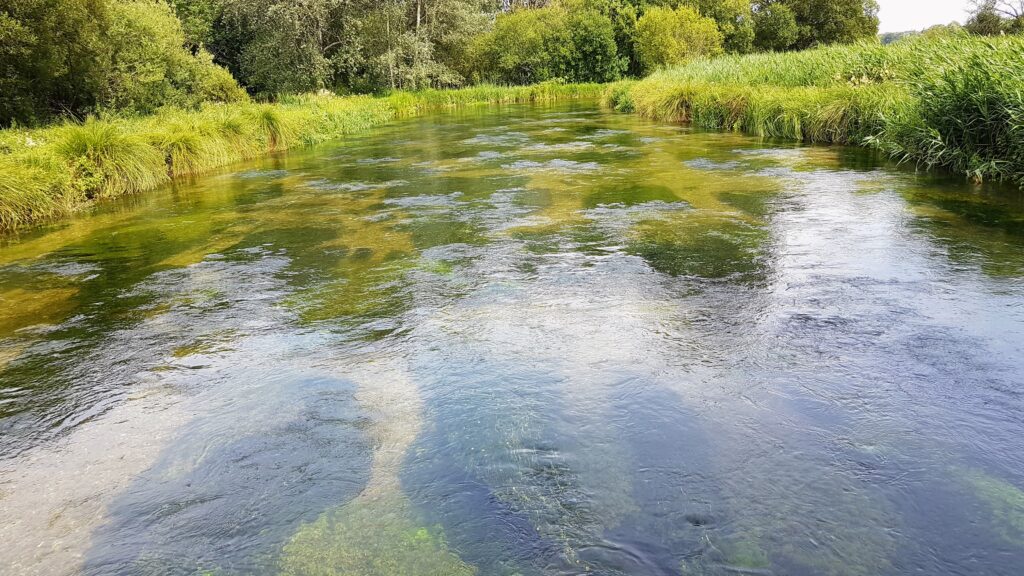
The Source
Sometimes it feels like a dream, but I know it really happened, even though it was decades ago. And in retrospect it was a key moment for me in returning to the source, in more ways than one. While I was a student at uni, someone told me about a magical spot that was nicknamed ‘the blue lagoon’, which sounded rather incongruous for its location somewhere in rural Berkshire. But I was intrigued enough to seek it out, which involved trespassing on private land.
And there amidst a encircling copse of trees was an extraordinary sight: a deep crystalline pool, blue from its sheer depth and clarity. Large trout languidly hung there in the depths below and the sandy pool bottom seemed alive; it was in constant motion as water bubbled up from the ground making plumes of sand dance. I felt I was with a living being and not merely stumbling upon an unusual geological phenomenon. This was the very source of a chalk stream and it felt like the Source to me. I was silenced by the experience and Ieft with a sense of reverence and respect.
In later years, I’ve searched for this magical place but have never rediscovered it despite searching the area I roughly remember, and also searching the internet. Perhaps in a way, it’s better it remains a mystery, but I do know it really occurred.
Chalk Streams
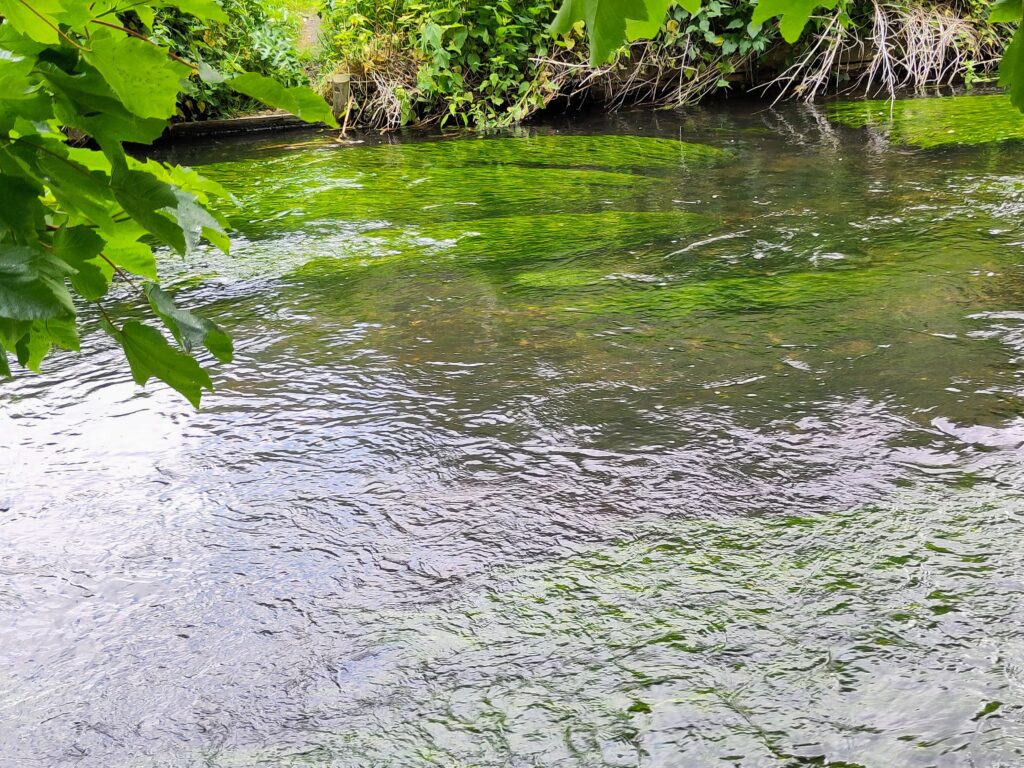
I’ve always loved and been drawn to rivers and especially chalk streams. Chalk streams are rare, clear-water rivers which are nearly all located in England. They’re really a wonder although not that well known and have been compared to rainforests due to their unique biodiversity and ecological importance. They are fed by groundwater coming up through the layers of chalk aquifers, filtering the water. The streams can emerge almost fully formed and they have a constant temperature, cool in summer and warm in winter.
I’ve spent many hours and days over the years on a kind of rolling pilgrimage following the course of one such chalk stream, the river Itchen, who flows through Hampshire in southern England; sometimes along good paths, sometimes picking my way through unmarked stretches and undergrowth. She flows swiftly with purpose and exuberance as well as at times meandering in deeper pools; her clear gravelly bed with clumps of vivid lime green water crowfoot, swirl in the current in rich long tresses.
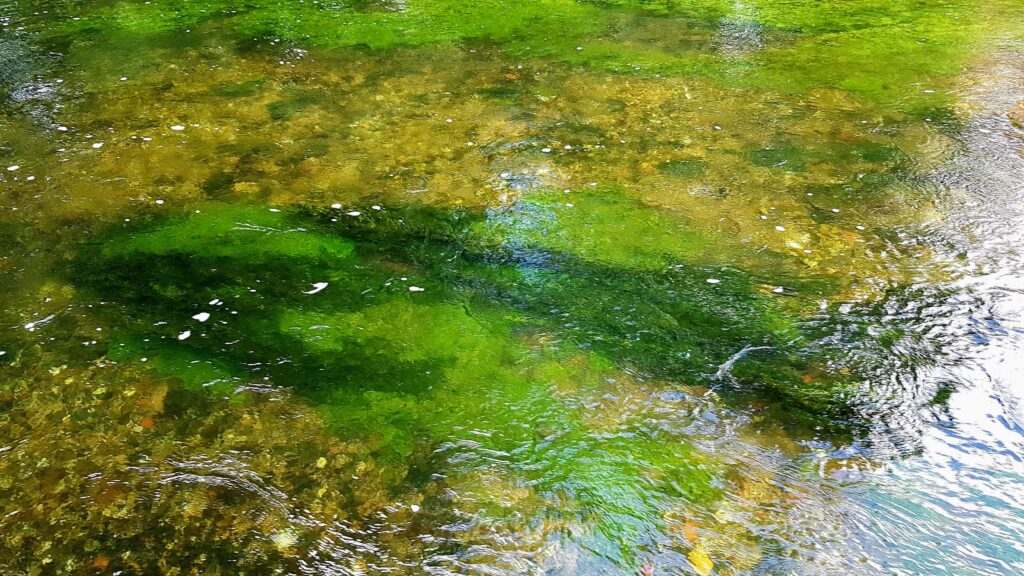
I say river who flows rather than that flows as a mark of respect and acknowledgement to the life of the river. Let’s not ‘which’ or ‘that’ her into inanimate ‘stuff’ or mere commodity.
Consciously changing our use of language in itself can help to change our habitual and unthought through attitudes of ‘othering’ and deadening the home that we are inseparably part of, by seeing our surroundings as inanimate.
Walking the banks of a flowing river, I listen to her speaking: gurgling, surging, swirling, splashing, or roaring when she meets weir or waterfall. I’m captivated by the ever changing movement, the eddies, sunlight rippling, dancing on the surface; ever changing, with pensive deep pools.
The river is changing moment to moment, as is everything, but more strikingly visibly so with rivers. I’m soothed, enlivened, uplifted, made thoughtful by rivers; they have different moods and I feel myself mirroring the mood.
All rivers have agency, flow, and different characters. I love the Thames which flows majestically past the end of my street, powerful and murky swirling currents which are due to the sea tides interacting with the river’s current. She is recovering from many centuries of human abuse and has seen everything. I always gain perspective from walking her banks; her waters naturally turbulent and mysteriously swirling in her opaqueness. Rivers wander around if you spend significant time with them through the seasons; in flood and drought, expanding and contracting.
Merely H2O?
The rational materialist says this is just all romantic metaphor to call a river alive. From this perspective, It’s merely a volume of H2O; an asset to be used as we (humans) see fit, for extraction, irrigation, fishing, or even dumping.
As an exercise to to turn this view around, think of the opposite of a living river: we can all picture what a dead or dying river looks like: think of an image of a river with fish floating belly up, stinking of sewage and sewage fungus, festooned with tangles of flushed wet wipes.
Such sights are lamentably all too common. Waterways everywhere across the world have been abused and grievously harmed by sewage overflows, agricultural runoff, pesticides and other chemicals. And of course we’ve dammed rivers worldwide, stopping their flow for our own purposes. In England there are no rivers left in good ecological health; even my beloved Itchen is starting to ail.
Indigenous cultures have almost universally held that rivers are alive. Yet attitudes are thankfully starting to change in the West too. The renowned nature writer Robert McFarlane has taken the plunge, in a departure from his previous more traditional work, with his new book, Is a River Alive? (it’s no spoiler to say that his answer is an emphatic yes)
Rights of Nature
The burgeoning “Rights of Nature” movement recognizes that nature has inherent rights, independent of human interests, and should be protected for its own sake. It aims to move beyond a human-centric view that treats nature as a resource to be exploited, instead establishing the right of nature to exist and flourish on her own terms.
This movement has secured some important legal rulings, according rights to rivers in various countries: in New Zealand, Canada and especially in Ecuador, the global pioneer, which has now enshrined the rights of nature in its constitution. Even in England, Lewes Council has now declared a Rights of River charter for the local River Ouse. And it’s important to remember that rivers are not just a single channel but include all the tributaries and the river basin. The river is the whole watershed and the natural foundation of each bioregion.
We human animals are largely water; we developed floating in watery wombs, and in our evolutionary history took the step from sea to land. We depend on water, our ancestral home. Perhaps this partly explains our deep connection with these living waters.
Water is Life.
